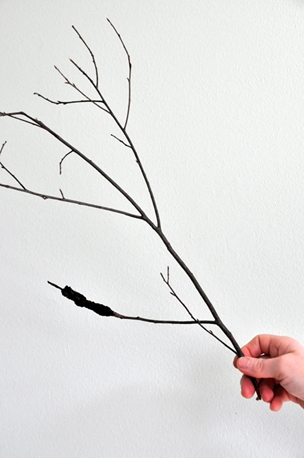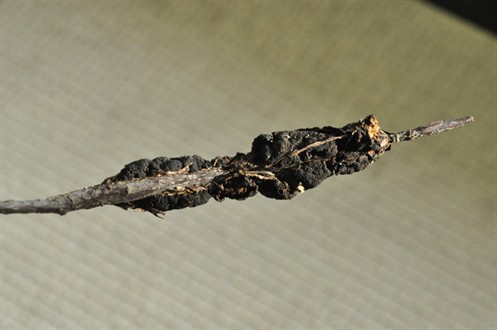Bare branches show black knot

enlarge this imageOnce you know a few plant disease names it becomes easier to track down information about new things you may see. And seeing new things is definitely an issue in late winter.
Say what you see: Reason to love plant disease names
When the leaves are off the trees and our eyes and mind are
probing for signs of spring, we notice branches that are different.
It's worth checking into what catches your eye.
The checking can be easy once you learn a few of the common
names for plant diseases. The scientific name may be a
challenge to pronounce, spell and remember but the common names
tend to be elegant in their simplicity. Combine the plant name and
a descriptive term for the problem as you use an Internet search
engine or the index of a book and you'll probably be amazed at how
quickly you can diagnose trouble
and learn how to control it.
This, for instance, is called cherry black knot. It's a fungal
problem that disfigures members of the cherry family. Some are more
susceptible than others.
If you see black knot on your ornamental cherry, cut out the
diseased wood on a dry day. Clean your pruning tools with bleach or
peroxide between cuts. In addition, take a late winter walk to see
if there is a "Typhoid Cherry" nearby -- a highly susceptible
carrier plant that's probably within a quarter mile. Control the
disease on nearby plant(s) or eliminate those others. Elimination
may be more practical than it sounds since the culprits are often
volunteer wild cherries along lot lines and hedge rows.
Cherry- and peach growers clear wild cherry trees from areas
near their orchards as a way to control the disease by reducing the
sources of infection.
Can't look for a Typhoid Cherry, because you don't
know how to tell a cherry from anything else when there are no
leaves? There's help for you in Identify it Bare.

Say
What You see: A way to diagnose trouble
When we run into plant problems we don't recognize, we:
- Open a Search engine
- Select the "images" option
- Enter in the Search field the plant's name (preferably its
scientific name) followed by a description of the trouble. For
example, Cherry branches black knobs or Prunus dark
thickened twig dead tip.
- Select and read from the search results. Focus on sites ending
in .edu (home of Extension bulletins). Check commercial sites'
credibility by comparing their information to Extension
bulletins.